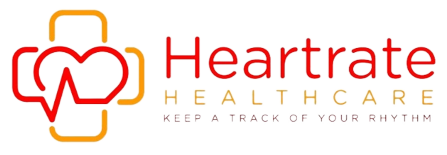How Inside Medical Support Can Boost Your Practice
In today’s rapidly evolving healthcare landscape, efficiency, precision, and patient satisfaction are paramount. One of the most effective ways to meet these goals is by leveraging inside medical support services. From administrative tasks to patient engagement and clinical coordination, inside support teams play a vital role in transforming the way medical practices operate.
This article explores how integrating inside medical support can benefit your clinic or healthcare business, improve operational efficiency, and enhance patient outcomes.
1. What is Inside Medical Support?
Inside medical support refers to the in-house or outsourced team of professionals who manage non-clinical and semi-clinical tasks within a medical practice. These tasks may include:
-
Patient scheduling and follow-up
-
Insurance verification and billing
-
Medical coding and documentation
-
Virtual front desk support
-
Referrals and care coordination
-
EMR (Electronic Medical Records) updates
Inside support teams may work on-site or remotely but remain integrated into the daily workflow of the practice.
2. Administrative Burden: A Hidden Obstacle
Physicians often spend hours weekly on administrative work. According to recent studies, more than 35% of a physician’s time is consumed by non-clinical duties. These tasks, while essential, can lead to:
-
Burnout among doctors and staff
-
Delays in patient care
-
Reduced face-time with patients
-
Decreased revenue due to inefficiencies
Inside medical support absorbs this burden, freeing up providers to focus on clinical responsibilities.
3. Enhancing Patient Experience
Today’s patients expect seamless interactions and quick responses. Inside medical teams:
-
Confirm and remind patients of appointments
-
Handle follow-up calls and rescheduling
-
Offer real-time responses to queries
-
Help reduce wait times and missed appointments
This improved communication and support significantly boost patient satisfaction, which is directly linked to practice reputation and retention rates.
4. Revenue Cycle Management (RCM) Optimization
Billing errors, delayed claims, and insurance denials can severely impact cash flow. Inside medical support teams trained in RCM can:
-
Verify patient insurance before appointments
-
Submit clean claims with accurate coding
-
Track claim status and follow up with payers
-
Minimize denials and maximize reimbursements
An efficient support system can improve collections by up to 25%, ensuring financial stability.
5. Compliance and Documentation Accuracy
Proper documentation is critical for both legal protection and reimbursement. Inside medical support specialists help:
-
Maintain up-to-date and accurate EMR entries
-
Ensure documentation aligns with HIPAA regulations
-
Assist with audit preparation and compliance reporting
This reduces the risk of legal complications and fines while improving data quality.
6. Scalability and Flexibility
As practices grow, the demand for support services increases. Inside medical support systems are highly scalable:
-
New providers can be onboarded easily
-
Tasks can be redistributed based on demand
-
Practices can expand services without overburdening current staff
This flexibility enables clinics to handle more patients without sacrificing quality.
7. Cost-Effectiveness
Hiring full-time in-house staff for every support role can be costly. Outsourced inside support teams:
-
Offer services on-demand or full-time
-
Eliminate the need for extensive training and overhead
-
Provide access to specialized skills without long-term contracts
This model can cut operational costs by 30–50% while maintaining high service levels.
8. Integration with Technology
Inside medical support teams often work with the latest healthcare technologies and software:
-
Telehealth coordination
-
AI-driven patient scheduling tools
-
Cloud-based billing and EMR systems
They help your practice stay ahead of the curve in digital transformation without disrupting workflows.
9. Case Example: A Mid-Sized Clinic’s Success
Dr. Sharma’s internal medicine clinic in Texas struggled with high patient wait times, billing issues, and overworked staff. After hiring an inside medical support team:
-
Wait times dropped by 40%
-
Patient satisfaction scores increased by 28%
-
Claim acceptance rates improved to 95%
This turnaround showcases the transformative power of smart support systems.
10. Final Thoughts: A Smart Investment in Growth
Inside medical support is more than just assistance—it’s a strategic asset. In an era where patient experience and efficiency define success, inside support becomes the backbone of a thriving practice.
Whether you are a solo practitioner or run a large multispecialty clinic, investing in inside medical support can deliver lasting improvements in quality, profitability, and growth.






